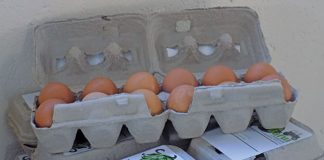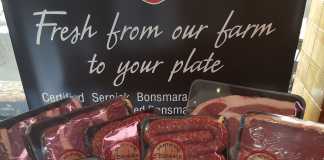
Photo: FW Archive
The agriculture sector’s contribution to South Africa’s fourth quarter GDP figures could have been even higher if it was able to expand meat exports, according to Gerhard Schutte, CEO of the Red Meat Producers’ Organisation (RPO).
“We currently export 4% of our beef, but this could increase to 20% over the next few years. With regards to lamb, we currently export 1% and this could increase to 6%.”
A comprehensive traceability system was, however, the key to any real growth for the sector, he added.
During Statistics South Africa’s (Stats SA) announcement of the 2021 fourth quarter GDP results on Tuesday, 8 March 2022, it was stated that good rainfall during the period under review helped boost agriculture activity.
According to Stats SA, the agriculture, forestry and fishing industries increased 12,2% from R114,03 billion in the third quarter to R127,96 billion in the fourth quarter, and contributed 0,3 of a percentage point to overall GDP growth.
South Africa’s overall GDP increased 1,2% from just over R4,45 trillion in the third quarter of 2021 to more than R4,5 trillion in the fourth quarter, Stats SA said.
Paul Makube, senior agricultural economist at FNB, said agriculture’s 12,2% quarter-on-quarter growth was “impressive” after the surprising decline of 1,5% from R143,561 billion in the second quarter of 2021 to R114,031 billion in the third quarter of 2021.
“The upbeat outcomes for agriculture were not surprising given the already positive indications of good seasonal rainfall that boosted activity with ‘heavy lifting’ in the wheat harvest, which rose 6% year‑on‑year to a record high of 2,26 million ton amid strong prices averaging R5 941/t (up 6,6% quarter-on-quarter and 19,5% year-on-year).”
Makube said animal products also made a very significant contribution to agriculture’s GDP outcomes on the back of increased livestock slaughterings, robust domestic demand, and strong meat prices.
Schutte told Farmer’s Weekly that while the number of cattle slaughtered in South Africa declined from over 2,6 million to about 2,58 million in 2021, carcass weights increased.
RPO statistics showed a 13% increase in earnings from cattle year-on-year.
“The formal and informal sectors’ combined income for 2021 was around R53 billion,” he said.
With regard to sheep, the number of formal slaughterings had decreased from 4,5 million animals (2020) to 4,3 million animals (2021).
“In this sector, around 50% of animals are slaughtered informally and therefore the total value of formal and informal slaughtering are estimated at R15,4 billion,” Schutte said.
He added that this translated into a 4% increase in value, despite the fact that fewer animals had been slaughtered.












